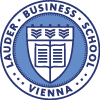Principal Investigators: Prof. (FH) Mag. (FH) Martin Samek
Collaborators: Students of Intercultural Management and Leadership (year 2009)
Cooperation partners: Advisory House, KSR-Group
Duration of the project: September 2009 – May 2011
Contact: [email protected]
Objective of the project
With the constant growth of the automobile fleet in several countries, traffic congestion problems inevitably arise, especially in cities that were originally designed and constructed not taking into consideration factors such as population expansion, zoning laws and the extensive use of cars as a mode of transportation. Amongst those cities, the city of Vienna is one such example, with its first district facing urban mobility problems. This is due to the heavy traffic brought to it because of its diversified nature that makes it a tourist destination, business center and one of the main shopping districts of the city. Therefore, traffic congestion has given rise to various issues concerning urban mobility, the environment and the existing infrastructure.
The aim of this research project is to investigate people’s travelling habits and commuting patterns in Vienna, concentrating on its first district area. This was done in order to find alternative methods of transportation that will alleviate the current traffic congestion problems.
Research methods
To identify travelling and traffic patterns in Vienna’s city center personal interviews with inhabitants of the 1st district, people working in this area, visitors/tourists have been conducted. Secondary research covers the analysis of statistical reports, academic literature and official websites of related institutions.
Results and findings
Based on the travelling and traffic patterns identified, solutions to reduce traffic at critical times and to improve the efficiency of urban mobility have been developed. Two such solutions with the highest potential to be implemented have been selected and developed further into ready to be put into force business models.
Relevance and applicability
The project provides a detailed analysis of the current market conditions in Austria, regarding the infrastructure, transportation, environment, technology and energy areas. As a result, different alternative methods of transportation within Vienna’s first district have been developed. These alternatives provide solutions which can be used as a reference for different European city centers that face similar urban mobility challenges.


Recent Comments